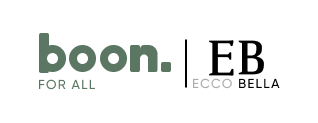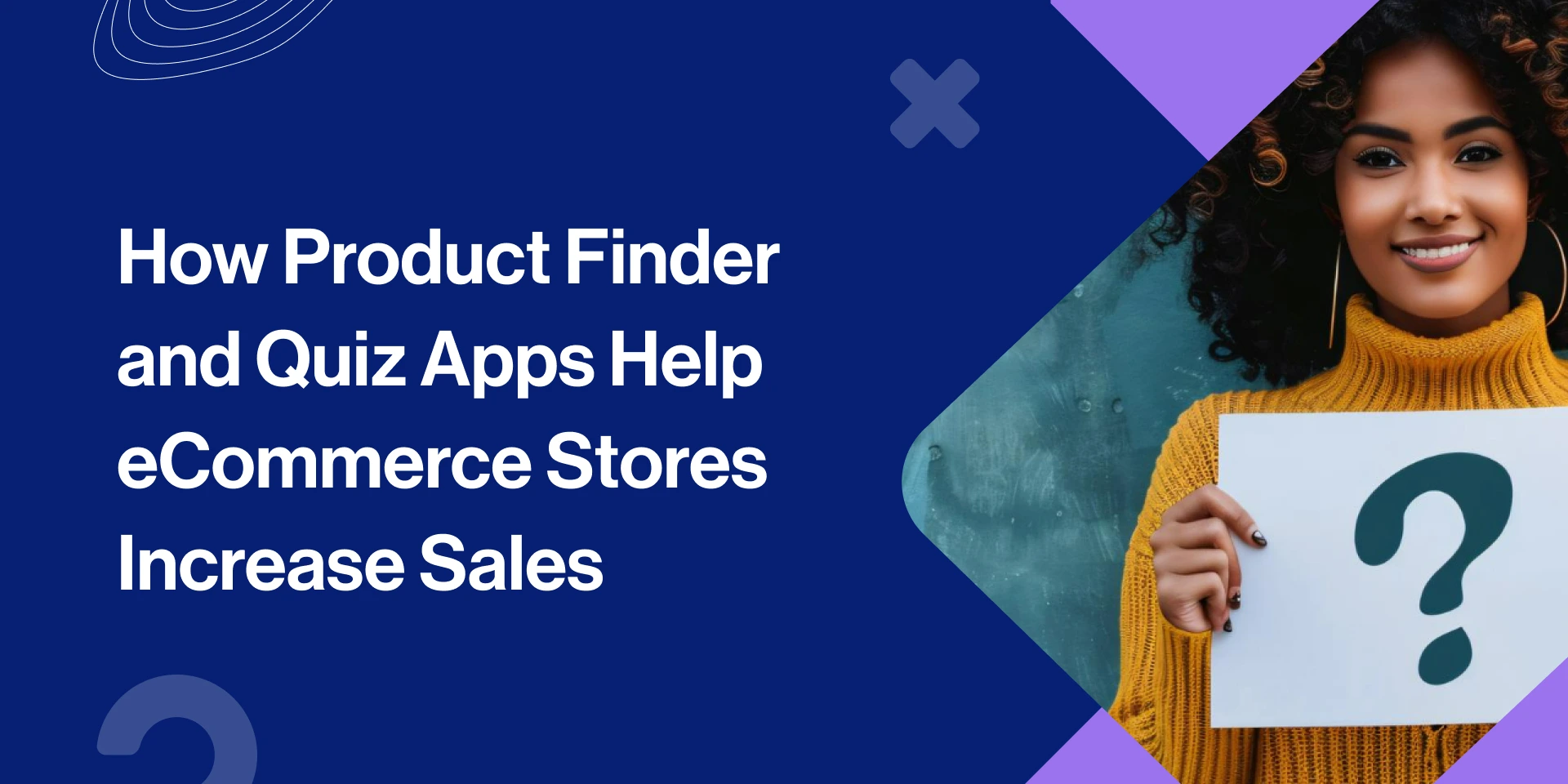Table Of Contents:
Why Product Discovery Matters for Online Stores
In the fast-paced world of e-commerce, shoppers aren’t just browsing—they’re hunting for solutions. But with millions of products at their fingertips, finding the correct item can feel like searching for a needle in a digital haystack. This is where product discovery becomes the unsung hero of online shopping.
Imagine walking into a physical store where aisles are unmarked, shelves are overflowing, and no one’s there to help. Frustrating, right? That’s precisely what happens when online stores fail to prioritize intuitive product discovery. Shoppers face endless scrolls, generic filters, and decision overload, leading to cart abandonment and lost revenue. In fact, studies show that 88% of shoppers leave sites with poor navigation—and rarely return.
But when done right, product discovery transforms chaos into clarity. It:
- Reduces bounce rates by guiding shoppers to relevant products faster.
- Boosts conversions through personalized recommendations that feel tailor-made.
- Builds loyalty by creating seamless, enjoyable shopping journeys.
Tools like product finder and quiz apps act as virtual sales assistants, asking the right questions and delivering curated results. They bridge the gap between overwhelm and satisfaction, ensuring customers find precisely what they need—or even discover products they didn’t know they wanted.
In an era when 73% of consumers expect brands to understand their preferences, mastering product discovery isn’t just smart—it’s essential for survival. The next sections will explore how cutting-edge tools are rewriting the rules of e-commerce success.
Key Takeaways:
- Fuse Product Finders + Quizzes for Maximum Impact: Combining guided selling (finders) with engaging storytelling (quizzes) creates a 360-degree shopping experience that boosts conversions by up to 50%, reduces returns, and builds customer loyalty.
- Personalization Drives Sales & Reduces Friction: Tools like ConversionBox use AI to turn overwhelming catalogs into tailored recommendations, slashing decision paralysis and cutting return rates by 30% through hyper-relevant matches.
- Easy to Implement, Scalable for Any Business: Whether you’re on Shopify, WooCommerce, or Magento, no-code tools let you launch mobile-friendly quizzes and finders in under 15 minutes—ideal for small shops, enterprises, and every niche in between.
The Problems with Conventional Product-Finding Experiences
In the race to offer endless variety, many e-commerce stores inadvertently create friction that drives shoppers away. Let’s break down the three critical pitfalls of traditional product discovery:
1. Overwhelming Product Catalogs
Imagine a shopper searching for a “black dress” and being greeted with 5,000 options. While choice is good, too much choice is paralyzing. Large catalogs often drown customers in a sea of similar products, forcing them to sift through irrelevant items.
- The Result: Shoppers waste time scrolling, grow frustrated, and leave without buying.
- The Data: 56% of consumers abandon sites when they can’t quickly find what they need.
- Example: A customer seeking a budget-friendly skincare moisturizer gets lost in a 10-page list of products, half of which are luxury items.
2. Poor Filter UX and Navigation Fatigue
Filters and categories are meant to simplify searches—but clunky, outdated designs often do the opposite. Common issues include:
- Limited Filters: Inability to combine preferences (e.g., “under $50 + vegan + fragrance-free”).
- Hidden Filters: Critical options buried in menus or requiring endless scrolling.
- Slow Load Times: Filters that lag or reset after each selection. Navigation fatigue sets in as shoppers click through layers of menus, only to hit dead ends.
- Example: A parent shopping for a “waterproof, size 6, light-up kids’ sneaker” gives up after the filters fail to narrow the 2,000+ results.
3. Analysis Paralysis for Shoppers
When faced with too many options, customers freeze instead of converting. Analysis paralysis is the silent killer of sales:
- The Paradox of Choice: 75% of shoppers feel overwhelmed by large assortments.
- Decision Stress: The fear of picking the “wrong” product leads to cart abandonment.
- Example: A gifter spends 30 minutes comparing 200 coffee mugs, only to exit the site empty-handed.
- Why This Matters: These friction points irritate shoppers and cost stores revenue. For every second a customer spends confused, competitors like Amazon are just a click away.
- The Silver Lining: Tools like ConversionBox’s Product Finder transform these pain points into opportunities. By guiding shoppers with personalized questions and smart recommendations, stores can cut through the noise—and keep customers engaged.
Ready to fix your product discovery? Audit your site’s UX for free and see where you’re losing sales.
What Are Product Finder Tools?
The Mobile Problem
Product finder tools are interactive solutions designed to simplify the shopping experience by guiding customers to the most relevant products in seconds. Think of them as digital concierges—they ask targeted questions about a shopper’s needs, preferences, or use cases, then instantly filter and recommend items that align with their answers.
Purpose of Product Finders
Cut Through Clutter: Replace endless scrolling with a streamlined, decision-focused journey.
Reduce Decision Fatigue: Narrow choices intelligently so shoppers don’t feel overwhelmed.
Boost Confidence: Help customers feel confident they’ve found the right product for their needs.
For example, a camera store might use a product finder that asks:
- “What’s your budget?”
- “Are you shooting photos for travel, sports, or portraits?”
- “Do you prefer lightweight or professional-grade gear?”
Based on these answers, the tool recommends 3-5 tailored options, eliminating guesswork.
How They Work
Question Flow: A short series of intuitive, multiple-choice questions.
Smart Filtering: Algorithms match responses to product attributes (price, features, etc.).
Personalized Results: Display curated products with clear explanations (“We chose this for your budget and portrait photography needs”).
Unlike basic filters, product finders engage shoppers proactively and mimic the expertise of an in-store salesperson. They’re especially powerful for stores with large or complex catalogs—think electronics, furniture, or specialty retailers.
Why It Matters: Brands using tools like ConversionBox’s Product Finder see up to 40% higher add-to-cart rates by turning confusion into clarity.
Are you struggling with navigation fatigue on your site? Get a free audit to identify gaps in your product discovery flow.
Supercharge Your Site Search & Product Discovery
Discover how our AI can transform your product discovery and boost conversions.
Schedule a DemoWhat Are E-commerce Quiz Apps?
E-commerce quiz apps are interactive tools that engage shoppers through personalized, conversational questions to uncover their preferences, needs, or challenges. Unlike product finders, quizzes prioritize storytelling and emotional connection, turning the shopping journey into an engaging experience.
Purpose of Quiz Apps
Personalization: Tailor recommendations based on lifestyle, habits, or personality.
Data Collection: Gather insights (e.g., skin type, fitness goals) to refine marketing strategies.
Entertainment: Make shopping fun (e.g., “What’s Your Decor Style?”).
Upselling: Suggest complementary products or bundles.
Example: A beauty brand’s quiz asks, “What’s your biggest skincare concern?” followed by “How often do you exfoliate?” to recommend a customized routine.
What Makes Quizzes Different from Product Finders?
While both tools guide shoppers, they serve distinct purposes:
| Aspect | Quiz Apps | Product Finders |
|---|---|---|
| Focus | Engagement & storytelling | Utility & efficiency |
| Interaction Style | Fun, conversational questions | Practical, goal-oriented questions |
| Outcome | Personalized product matches + data | Narrowed product selections |
| Data Use | Builds customer profiles for marketing | Focuses on immediate purchase intent |
| Tone | Playful, brand-aligned | Functional, straightforward |
Example
Quiz: “Find Your Perfect Skincare Routine” (playful, collects email for results).
Finder: “Camera Finder for Travel Photography” (direct, skips to product matches).
Why Quizzes Work
83% of shoppers willingly share data for personalized experiences.
Quizzes boost time on-site by 200% and increase email list sign-ups.
Tools like ConversionBox’s Quiz App blend the best of both worlds, offering quizzes that drive sales while building customer loyalty.
Ready to engage shoppers with quizzes? Explore ConversionBox’s templates for beauty, fashion, and more.
Top Use Cases for Product Finder and Quiz Apps in E-commerce
Product finders and quizzes aren’t one-size-fits-all tools—they shine brightest when tailored to specific industries. Here’s how leading e-commerce niches leverage them to boost sales:
1. Fashion & Apparel
- Style Quizzes: “What’s Your Signature Look?” helps shoppers discover outfits aligned with their personality.
- Size Finders: Reduces returns by matching customers to the perfect fit using height, weight, and brand-specific sizing.
- Example: A dress brand recommends occasion-specific outfits using a 5-question style quiz, increasing AOV by 25%.
2. Beauty & Skincare
- Skin Type Quizzes: “Find Your Routine” asks about skin concerns, climate, and goals to suggest tailored products.
- Personalized Routine Builders: Combines cleansers, serums, and moisturizers into custom regimens.
- Result: A skincare brand saw a 40% conversion lift after launching a quiz that recommends products based on acne severity.
3. Electronics
- Laptop Finders: Asks about usage (gaming, work, travel) and budget to narrow down specs.
- Camera Matchers: Recommends gear based on skill level (beginner vs. pro) and photography style.
- Pro Tip: Highlight technical features in plain language (“This DSLR is ideal for capturing fast-moving subjects”).
4. Health & Wellness
- Supplement Finders: Matches users to vitamins based on diet, allergies, and health goals.
- Fitness Product Recommendation Quizzes: “What’s Your Workout Personality?” suggests equipment for yogis, HIIT lovers, or runners.
- Example: A wellness brand reduced cart abandonment by 30% after guiding users to protein powders via a 3-question quiz.
5. Home & Decor
- Furniture Finders: Filters sofas, desks, or beds by room size, color palette, and material preferences.
- Room Style Quizzes: “Discover Your Interior Design Aesthetic” pairs users with decor themes (minimalist, bohemian, modern).
- Result: A furniture retailer boosted cross-sells by suggesting matching rugs and lamps post-quiz.
6. Gifting
- Gift Finders: Filters by recipient (partner, coworker, teen), occasion (birthday, anniversary), and budget.
- Personality-Based Quizzes: “What Gift Matches Their Vibe?” uses traits (adventurous, homebody, foodie) to recommend ideas.
- Pro Tip: Launch holiday-themed gift guides early to capture seasonal shoppers.
7. Subscription Boxes
- Personalization Quizzes: Curates boxes (beauty, snacks, books) based on preferences like flavor profiles or skin type.
- Frequency Selectors: Lets users choose delivery schedules (monthly, quarterly).
- Example: A snack box brand grew subscriptions by 50% using a quiz that prioritizes dietary restrictions.
8. Specialty Retail
- Hobby Finders: Guides crafters, gamers, or gardeners to niche tools (e.g., “What’s Your Knitting Skill Level?”).
- Pet Care Quizzes: Recommends food, toys, or accessories based on breed, age, and activity level.
- Outdoor Gear Matchers: Suggests camping equipment for casual campers vs. hardcore hikers.
Why These Use Cases Work
- Hyper-Personalization: Shoppers feel understood, reducing bounce rates.
- Data-Driven Decisions: Insights from quiz responses inform inventory and marketing strategies.
- Mobile Optimization: 67% of shoppers use quizzes on mobile—tools like ConversionBox ensure seamless cross-device experiences.
Need industry-specific templates? Explore ConversionBox’s pre-built quizzes and finders for your niche.
Product Finder + Quiz Apps: The Perfect Fusion to Drive More Sales
Imagine combining the precision of a GPS with the charm of a friendly guide—that’s the power of merging product finders and quiz apps. While each tool is effective alone, together, they create a 360-degree shopping experience that boosts sales, loyalty, and customer satisfaction.
1. Personalization Meets Guided Selling
Product finders excel at narrowing choices, while quizzes dive deep into preferences, lifestyles, and pain points. Together, they act like a savvy salesperson who listens before recommending:
Step 1: A quiz asks engaging questions (“What’s your skin type?” or “How do you unwind after work?”) to uncover needs.
Step 2: The product finder uses this data to filter thousands of SKUs into a handful of hyper-relevant matches.
Example: A jewelry brand’s quiz asks about style preferences (minimalist vs. bold) and occasions (everyday vs. formal), then the finder suggests curated pieces. Result? 35% higher AOV and 20% fewer returns.
This fusion turns generic browsing into a story-driven journey, where customers feel understood—not overwhelmed.
2. Boosting Engagement & Reducing Returns
Engagement: Quizzes keep shoppers interacting longer (average 2.5x more time-on-site), while product finders shortcut decision-making.
Accuracy: By combining quiz insights (e.g., “I have sensitive skin”) with finder logic, recommendations align with real needs, slashing return rates by up to 30%.
Case Study: A furniture retailer blended a “Find Your Decor Style” quiz with a sofa finder. Shoppers who completed both steps had a 45% higher conversion rate and 25% fewer returns compared to those using filters alone.
Why This Fusion Wins
Solves Analysis Paralysis: Guides shoppers step-by-step, replacing overwhelm with clarity.
Data Goldmine: Quiz responses (e.g., fitness goals, gifting budgets) inform inventory and marketing strategies.
Mobile-Friendly: Over 60% of quizzes are completed on mobile—tools like ConversionBox ensure seamless, responsive flows.
The Bottom Line: When quizzes and finders work in harmony, they don’t just sell products—they build trust. Customers get tailored solutions, while brands gain loyal advocates and actionable insights.
Uncover Hidden Gaps in Your Search and Product Filters
Get a free product discovery audit and find opportunities to improve conversions.
Talk to an ExpertHow to Install Product Finder & Quiz Apps on Popular Platforms
Installing product finder and quiz apps is quick and easy, even for non-tech users. Here’s how to get started on your platform:
Product finder Shopify
- Go to the Shopify App Store.Search for your app (e.g., ConversionBox).
- Click Add App → Install.
- Follow the in-app setup guide (no coding needed).
- Detailed Shopify installation guide
Product finder Magento
- Download the app’s extension files from the provider.
- Upload files to your Magento backend via FTP or Extension Manager.
- Configure settings under Stores → Configuration.
- Test the tool on your live site.
Product finder BigCommerce
- Visit the BigCommerce App Marketplace.
- Search for your app and click Install.
- Customize the quiz/finder design via the app’s dashboard.
- Embed it on product pages or your homepage.
- BigCommerce setup steps
Product finder WooCommerce
- Install the plugin from the WordPress dashboard (Plugins → Add New).
- Activate the plugin and connect it to your WooCommerce store.
- Use drag-and-drop builders to create quizzes or finders.
- Add shortcodes to pages/posts where you want them to appear.
Done! Most apps take under 15 minutes to set up. Need help? Get a free audit or book a demo.
Why ConversionBox Product Finder & Quiz is Most Loved by Merchants
In a sea of generic tools, ConversionBox stands out as the Swiss Army knife of product discovery. It’s not just another app—it’s a sales-driving powerhouse that merges the precision of product finders with the charm of quizzes, all while delivering measurable results. Here’s why merchants swear by it:
| Feature/Benefit | ConversionBox Product Finder & Quiz | Conventional Product Filters | Generic Quiz Apps |
|---|---|---|---|
| Ease of Setup | No-code, quick integration | May require developer help | No-code (but limited options) |
| Personalized Recommendations | AI-powered, based on user preferences & behavior | Basic filtering only | Basic personalization |
| Advanced Analytics | Tracks quiz engagement & product matches | Limited to page views | Basic engagement tracking |
| Platform Compatibility | Works with Shopify, WooCommerce, Magento, BigCommerce | Native to platform | May need custom work |
| Customization Options | Full design & logic flexibility | Limited to filter UI options | Pre-set quiz templates |
| Interactive Experience | Engaging, conversational flow | Passive filter system | Interactive but often linear |
| Proven to Boost Conversions | Case studies & real results | Not optimized for engagement | Results vary widely |
| Combines Finder & Quiz | Fusion of guided selling + quiz personalization | Filters only | Quiz only |
| Product Discovery Across Catalogs | Works for large & small catalogs | Works for large catalogs | May struggle with larger catalogs |
| Seamless Product Links | Direct add-to-cart or product page linking | Standard behavior | Standard behavior |
| Better for Gift Guides, Bundles, & Seasonal Campaigns | Optimized templates for campaigns | Static filters only | Requires manual setup |
| Support & Best Practices | Expert onboarding & strategy help | DIY only | Limited support |
Conclusion: Smarter Product Discovery = Higher Conversions
In today’s competitive e-commerce landscape, guiding shoppers to the right products isn’t just a luxury—it’s a necessity. By blending the precision of product finders with the engagement of product recommendation quiz apps, stores transform overwhelm into opportunity, confusion into confidence, and clicks into sales. Whether you’re battling massive catalogs or niche offerings, more innovative discovery tools like ConversionBox don’t just boost conversions—they build lasting customer loyalty.
Frequently Asked Questions (FAQ)
Get a Free Demo of ConversionBox
See how AI-powered product discovery can skyrocket your sales.
Already using a tool but unhappy? Get a Free Product Discovery Audit Let our experts diagnose issues and optimize your strategy—at no cost.
Boost Your eCommerce Conversion Rates with Expert Guidance
Get a free consultation with our conversion specialists to tackle your biggest challenges.









